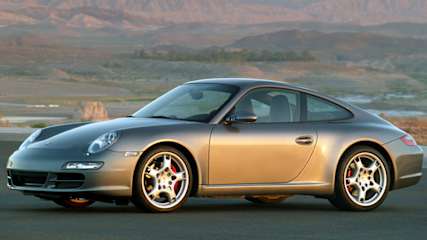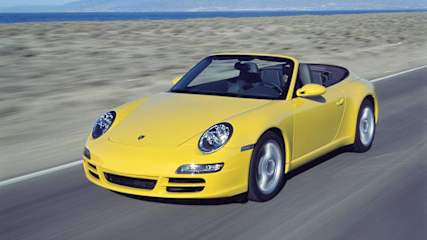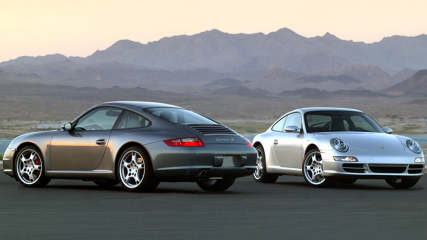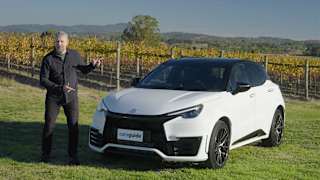Porsche 911 Carrera 2005 Review
By CarsGuide team · 12 Mar 2005
No headaches, no drama, nothing to worry about.You can hit the Friday-afternoon commute in the latest 911 Carrera and know you will be more relaxed when you get home than when you left the office.And you can drive it without switching your brain from cruise mode to full-on concentration.The latest 911 will still crack along brilliantly when you're in the mood and on the right road, but it does not force you to play its game all the time.It is a major breakthrough for a car that has always been one of the very best in the world – and a first-choice pick for Tattslotto winners – but was a very acquired taste.It was a car you had to commit to owning and driving.But times change, Porsche owners have become older and roads have become crowded and confrontational. The renowned German sports car company has responded.It still talks the talk and walks the walk, but does not have to shout or stamp its feet.It's more than a facelift but short of a total model change, coming just after the 40th birthday of the 911, now known in-house as the 997 series.The car is a ground-up rework, even if a lot of parts (up to the roof) are the same as they were in the 996 that arrived in 1998.That car was done at a time when Porsche was strapped for cash and so a lot of the latest improvements have been ready to go for more than five years.The biggest visual change is the return to traditional round headlamps. Yet the new-look cabin, which finally gets a reach-and-tilt adjustable wheel and sensible switches, is the thing you really appreciate from the driver's seat.The newer look will impress friends and 911 fans, but the cabin makes life considerably better.The overall appearance is a little sharper. There is more space for people and luggage. The car's weight has stayed the same despite extra equipment, which now runs to standard satnav, electric seats, 18-inch alloy wheels and PSM stability control.The new 911 range currently has two models, the Carrera and Carrera S, though they will soon be joined by the Cabrio.Porsche plans the usual fast-car additions, including the GT3 road warrior and a Turbo.The biggest mechanical change is two engine capacities, 3.6 and 3.8 litres, though both come with either a six-speed manual or five-speed Tiptronic auto gearbox.The options include a track-pack suspension system with 19-inch alloys and a built-in stopwatch, as well as the usual stuff including sunroof, custom paint and fully customised cabins.ON THE ROADA PORSCHE 911 is not the best choice for Melbourne in Grand Prix week.This is particularly the case when you consider tiredness, changeable weather, crowded roads and the gawk factor you always have in a Porsche.I wondered if the car would live up to the first impression from a drive in Germany last year, especially as I was driving a Tiptronic five-speed and not the preferred manual.But it flew through the test. And it rocked through a Monday-night fun run on some favourite back roads.What's great is that the Carrera we drove is the best for both worlds.The 239kW engine is more than enough to snap away from the traffic lights in a signature of flat-six engine bark, and the suspension and brakes are all that you expect in a 911. But the car is also comfortable, quiet and relaxing.But put your foot down, or shift across into the manual mode and change with the steering wheel buttons, and it is as rewarding to drive as any car on the road.It holds the road as if magnetised, but still provides an incredible amount of feedback through the steering and seat. And it will get up and go as soon as the tachometer has 3000 revs on the dial.Our Carrera test car (not pictured) was loaded with plenty of optional equipment, including a sunroof and the track pack, which took the total price to $220,755. But the starting number of $203,225 is pretty reasonable for this type of car and one that's as good as the 911. And the fuel consumption was only 11.8 litres/100km on premium unleaded.The new cabin still looks and feels like a 911, but the seat sits lower and you get adjustment on the wheel.It's still tough to get into the tiny back bucket seats, which are only for youngsters.The only other complaint is the Tiptronic, because Porsche doesn't give you the chance to touch-change the auto through the gearlever. It's buttons only. We don't like it, because there is something rewarding about crisp changes with your left hand.We missed the signature movement of the steering wheel on broken surfaces, which has been eliminated with new suspension settings, but love the brakes, the power and the all-round response.The car runs up against rivals such as the Jaguar XK-R and Benz's CLK55 in a class that is becoming more competitive. But a Porsche 911 still stands out from the crowd, and has a driving feel that is unique and unmatched by anything short of a Ferrari.There is no doubt the new Carrera is a 911. It has supercar pace and precision on demand. But, by refining everything else about the car, Porsche has created a 21st-century star.THE BOTTOM LINETHE first 911 that is both a luxury cruiser and a red-hot sports car, and gives you the choice. This is a 911 that is right for the times.









